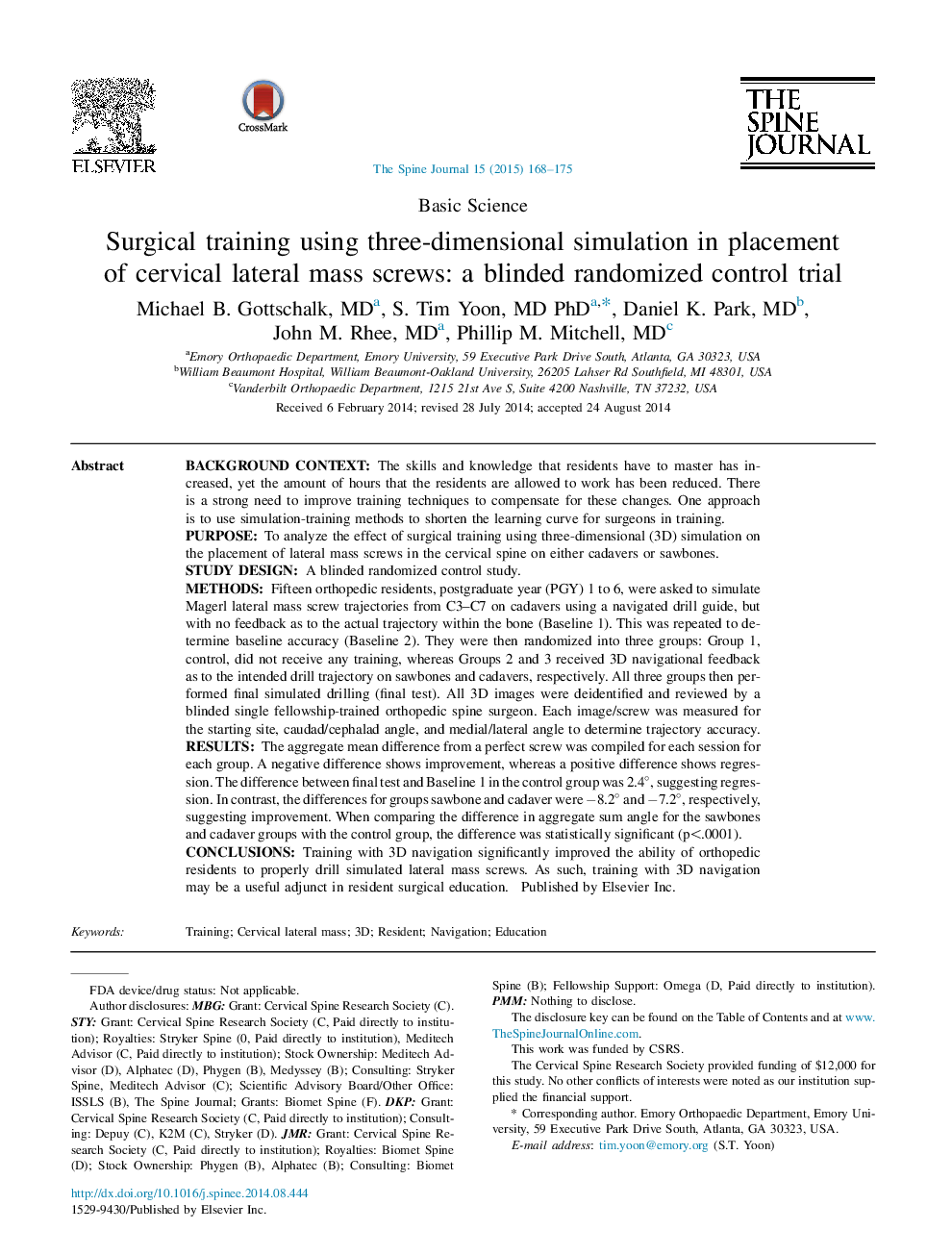| کد مقاله | کد نشریه | سال انتشار | مقاله انگلیسی | نسخه تمام متن |
|---|---|---|---|---|
| 4096515 | 1268564 | 2015 | 8 صفحه PDF | دانلود رایگان |
Background contextThe skills and knowledge that residents have to master has increased, yet the amount of hours that the residents are allowed to work has been reduced. There is a strong need to improve training techniques to compensate for these changes. One approach is to use simulation-training methods to shorten the learning curve for surgeons in training.PurposeTo analyze the effect of surgical training using three-dimensional (3D) simulation on the placement of lateral mass screws in the cervical spine on either cadavers or sawbones.Study designA blinded randomized control study.MethodsFifteen orthopedic residents, postgraduate year (PGY) 1 to 6, were asked to simulate Magerl lateral mass screw trajectories from C3–C7 on cadavers using a navigated drill guide, but with no feedback as to the actual trajectory within the bone (Baseline 1). This was repeated to determine baseline accuracy (Baseline 2). They were then randomized into three groups: Group 1, control, did not receive any training, whereas Groups 2 and 3 received 3D navigational feedback as to the intended drill trajectory on sawbones and cadavers, respectively. All three groups then performed final simulated drilling (final test). All 3D images were deidentified and reviewed by a blinded single fellowship-trained orthopedic spine surgeon. Each image/screw was measured for the starting site, caudad/cephalad angle, and medial/lateral angle to determine trajectory accuracy.ResultsThe aggregate mean difference from a perfect screw was compiled for each session for each group. A negative difference shows improvement, whereas a positive difference shows regression. The difference between final test and Baseline 1 in the control group was 2.4°, suggesting regression. In contrast, the differences for groups sawbone and cadaver were −8.2° and −7.2°, respectively, suggesting improvement. When comparing the difference in aggregate sum angle for the sawbones and cadaver groups with the control group, the difference was statistically significant (p<.0001).ConclusionsTraining with 3D navigation significantly improved the ability of orthopedic residents to properly drill simulated lateral mass screws. As such, training with 3D navigation may be a useful adjunct in resident surgical education.
Journal: The Spine Journal - Volume 15, Issue 1, 1 January 2015, Pages 168–175
